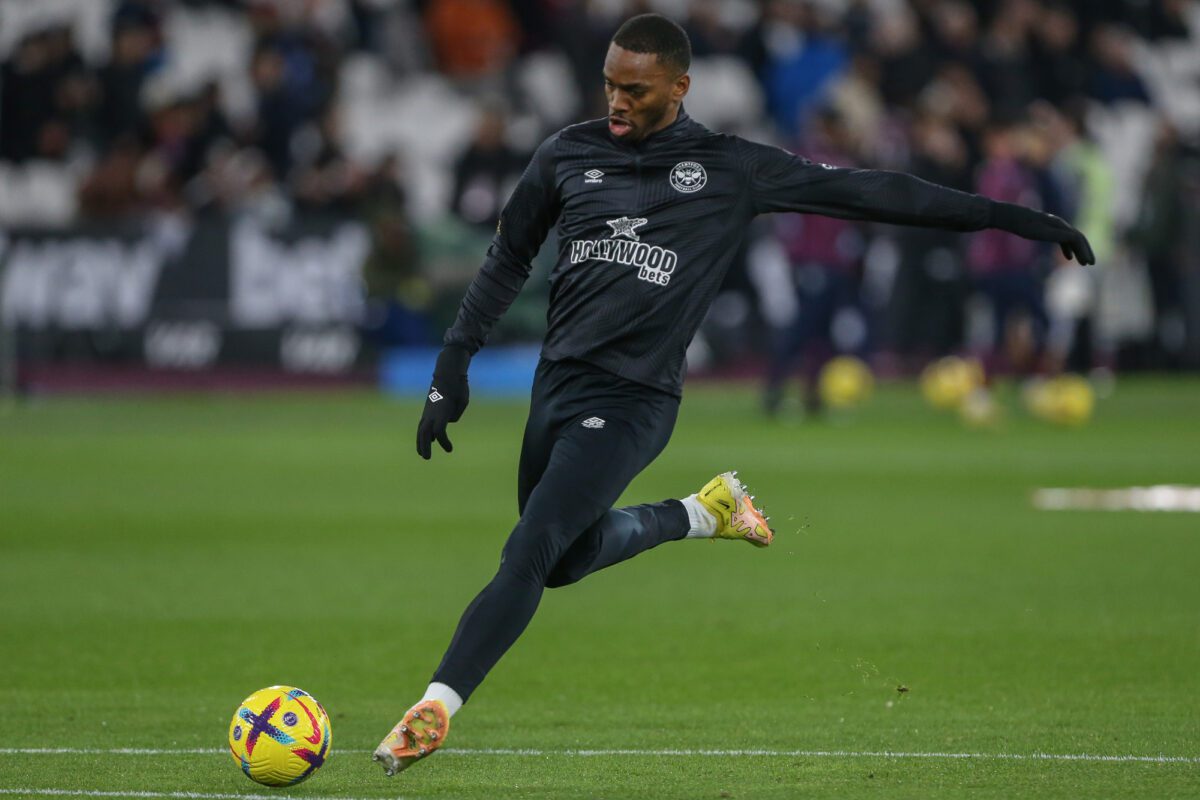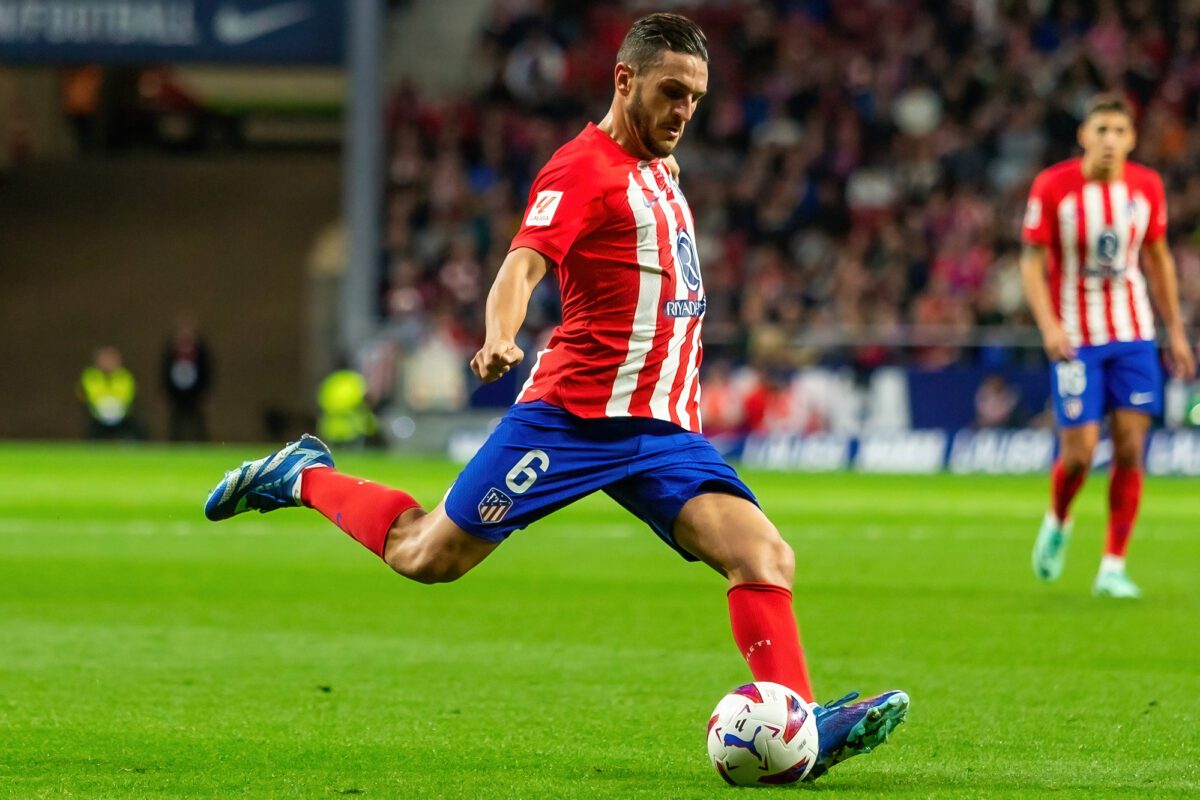Share the post "Knuckleball in Soccer: Technique, Strategic Use, and Play Variations"
In soccer, the knuckleball is an elusive skill that bewilders goalkeepers and players alike with its unpredictable trajectory. It’s a technique where the ball is struck in a way that minimizes spin, causing it to flutter and change direction mid-flight, making it incredibly difficult to predict and defend. Mastering this move can be a game-changer, adding a powerful weapon to our arsenal on the field.
When we hit a knuckleball just right, the ball dances through the air, responding to subtle variations in air pressure without the stabilizing force of spin. This effect is achieved by hitting the ball with either the instep or the front part of the foot, right around the valve to minimize spin. Central to executing this technique is a firm strike near the ball’s center and a particular following-through method—or rather, the deliberate lack thereof.

Understanding the Knuckle Ball
In mastering the knuckleball, we aim to manipulate the soccer ball in a way that results in unpredictable, erratic movements, making it difficult for goalkeepers to anticipate and save.
Watch out video on how to knuckle ball here;
Physics of the Knuckle Ball
The knuckleball in soccer is a product of minimal spin resulting in erratic motion during flight. When we strike a soccer ball correctly to create the knuckle effect, the ball will experience forces such as drag and wake turbulence. The ball’s movement becomes unpredictable because the airflow around it becomes inconsistent, causing sudden changes in direction. Below is a simplified table explaining the physics behind the knuckleball:
| Factor | Role in Knuckleball Dynamics |
|---|---|
| Minimal Spin | Reduces stability, causing erratic motion |
| Drag | Slows the ball, altering trajectory |
| Wake Turbulence | Creates swirling air patterns, inducing random movement |
History of the Knuckle Ball in Soccer
The knuckleball has been a part of soccer for decades, but it gained widespread attention with players like Juninho Pernambucano and later, Cristiano Ronaldo. These iconic players showcased how striking the ball with a particular technique could result in a powerful, movement-defying shot that goalkeepers find extremely challenging to predict and catch. The history of the knuckleball shows us how innovative techniques can transform methods of play and become a staple in a skilled player’s arsenal.
Mastering the Technique
To excel at delivering a potent knuckleball in soccer, we must focus on perfecting our stance, ensuring precise foot contact, and practicing our follow-through. Let’s break down each component to help us gain control and consistency when striking the ball.
Stance and Positioning
Our stance is the foundation of a successful knuckleball. We start by positioning ourselves at a comfortable distance behind the ball, typically about 6-7 steps back, and slightly to the side based on our dominant foot. We keep our body balanced and eyes on the ball, preparing ourselves mentally for the run-up. It’s crucial to approach the ball with a steady, consistent run to maintain balance and accuracy.
Foot Contact with the Ball
The moment of impact is critical. We aim to strike the ball with the instep area of our dominant foot, connecting with the ball’s center or slightly below. The goal is to hit the ball squarely, without any spin, which allows the ball to travel in that unpredictable knuckleball motion, making it difficult for goalkeepers to anticipate. We pay close attention to foot posture; our toes should be down and the ankle locked to provide a firm, flat surface upon contact.
Follow-Through
Our follow-through, or sometimes the intentional lack thereof, distinguishes a knuckleball from a typical shot. Unlike a standard shot where we follow through completely, with a knuckleball, we aim to pull back slightly right after making contact. This minimal follow-through is essential as it helps minimize the spin, contributing to the knuckle effect as the ball sails toward the goal. Practice is key to understanding the subtle nuances of this motion.
Strategic Implementation
In learning to harness the knuckleball in soccer, we must focus not just on technique but also when and how to use it to our advantage during a match.
Optimal Game Scenarios
The knuckleball thrives in situations where unpredictability is key. Free kicks are prime moments for us to exploit a knuckleball’s erratic behavior — the distance gives the ball ample time to deviate. These are particularly effective from 18 to 35 yards out from the goal. When aiming directly for goal, it’s crucial we choose a moment where a sudden change in the ball’s trajectory can catch the goalie off guard, such as during a counterattack or in the dying minutes of a close game.
Influence on Goalkeeping
Incorporating a knuckleball into our play significantly challenges goalkeepers. They must anticipate a ball that can shift direction mid-flight, often leading to misjudgments and spectacular goals. Our knuckleball shots make it difficult for a keeper to set their footing due to the low spin and sudden movement, requiring them to maintain keen focus and fast reflexes.
When we consistently practice and deploy this technique, it keeps goalkeepers cautious and hesitant, adding an extra layer of psychological pressure during set pieces and long-range strikes.

Variations and Training
In our journey to master the knuckleball in soccer, we’ll explore effective practice techniques and pinpoint frequent errors that can hinder our progress.
Practicing the Knuckle Ball
To see the knuckleball become a formidable part of our arsenal, we need dedicated practice. We begin by focusing on ball contact and body mechanics. For ball contact, aim for the lower-middle region, ensuring the ball is struck with the valve facing us. As for body mechanics, maintain a locked ankle, with toes pointing down, and follow through minimally to prevent unwanted spin. Here’s a step-by-step routine we can adopt:
- Set up the ball with the valve facing you.
- Take 4 to 6 steps back and one to the side, left or right depending on your dominant foot.
- Approach the ball at a 35 to 45-degree angle.
- Strike firmly near the center with a locked ankle.
- Limit your follow-through to minimize spin.
Remember, it’s about consistency. Schedule regular sessions, varying your distance and angle to the goal.
Common Mistakes to Avoid
When refining our knuckleball technique, it’s crucial to recognize and rectify common mistakes:
- Excessive Follow-Through: This often leads to unwanted spin, which defeats the purpose of a knuckleball. Practice a restrained follow-through.
- Improper Foot Placement: Striking the ball with the incorrect part of our foot can misdirect the shot. We should make contact with the instep, just above the toes.
- Poor Ball Positioning: If the ball isn’t set up right, we’ll struggle to hit the sweet spot. Make sure the valve faces us and remains steady before each attempt.
By diligently observing these points, we’ll be well on our way to mastering the unpredictable knuckleball.
Notable Players and Famous Knuckle Balls
When we watch soccer, we’re often in awe of the knuckleball—a shot that seems to defy physics with its unpredictable movement. Some of soccer’s most talented players have made this technique part of their arsenal.
Cristiano Ronaldo is perhaps the most famous for his knuckleballs. His free kicks can suddenly change direction, leaving goalkeepers baffled. A prime example of this is his free kick against Spain in the 2010 FIFA World Cup.
| Player | Famous Knuckleball Moment |
|---|---|
| Cristiano Ronaldo | 2010 World Cup free-kick against Spain |
| Juninho Pernambucano | Numerous free-kicks for Olympique Lyonnais |
| Didier Drogba | Free kick against Arsenal, Premier League 2009/10 season |
We also cherish the memories of Juninho Pernambucano, known for his signature free kicks that dipped and dived past bewildered keepers. His tenure at Olympique Lyonnais is filled with such moments.
Didier Drogba is another name etched into our minds; his powerful shots often included a knuckleball technique that contributed to his reputation as a fearsome striker.
In terms of how and when to implement the knuckleball, it’s most often used in free kick situations where players have the space and time to focus on the ball’s trajectory. Since the ball can move erratically, it’s ideal when attempting to score from a distance, where the unpredictability can outwit the goalkeeper’s reactions.
While many attempt the knuckleball, only a handful truly master it, making those moments all the more special for us as fans.
Adapting to Weather and Pitch Conditions
When we step onto the field to execute a knuckleball, we must be acute observers of both the weather and pitch conditions. Here’s what we need to pay attention to:
Weather: Our approach to hitting a knuckleball can be influenced by the weather.
- Wind: Heavy winds can magnify the unpredictability of the ball’s trajectory. It’s essential to assess wind direction and speed before taking the shot. A headwind can work to our advantage, aiding the ball’s zigzag motion.
- Rain: Wet conditions can make the ball heavier and affect its flight. A lighter hit can compensate for the additional weight and maintain the desired effect.
Pitch Conditions: The quality of the pitch plays a significant role as well.
- Grass Length: Longer grass can slow down the ball and decrease the knuckling effect, so we might need to hit the ball harder than usual.
- Dry vs. Wet Surface: A dry pitch can cause the ball to bounce unpredictably, while a wet surface can lead to a skidding ball, which requires adjustments in our striking technique.
To adapt to these conditions, we should:
- Practice under different conditions to understand how the ball behaves.
- Adjust our run-up depending on the surface; a firmer foot planting on wet surfaces can prevent slipping.
- Modulate our striking force to compensate for wind and pitch influences on the ball’s behavior.
By understanding and adapting to these varying factors, we improve our chances of successfully hitting a knuckleball that confounds goalkeepers and defenders alike.
Share the post "Knuckleball in Soccer: Technique, Strategic Use, and Play Variations"
Joel is a seasoned soccer journalist and analyst with many years of experience in the field. Joel specializes in game analysis, player profiles, transfer news, and has a keen eye for the tactical nuances of the game. He played at various levels in the game and coached teams - he is happy to share his insight with you.



